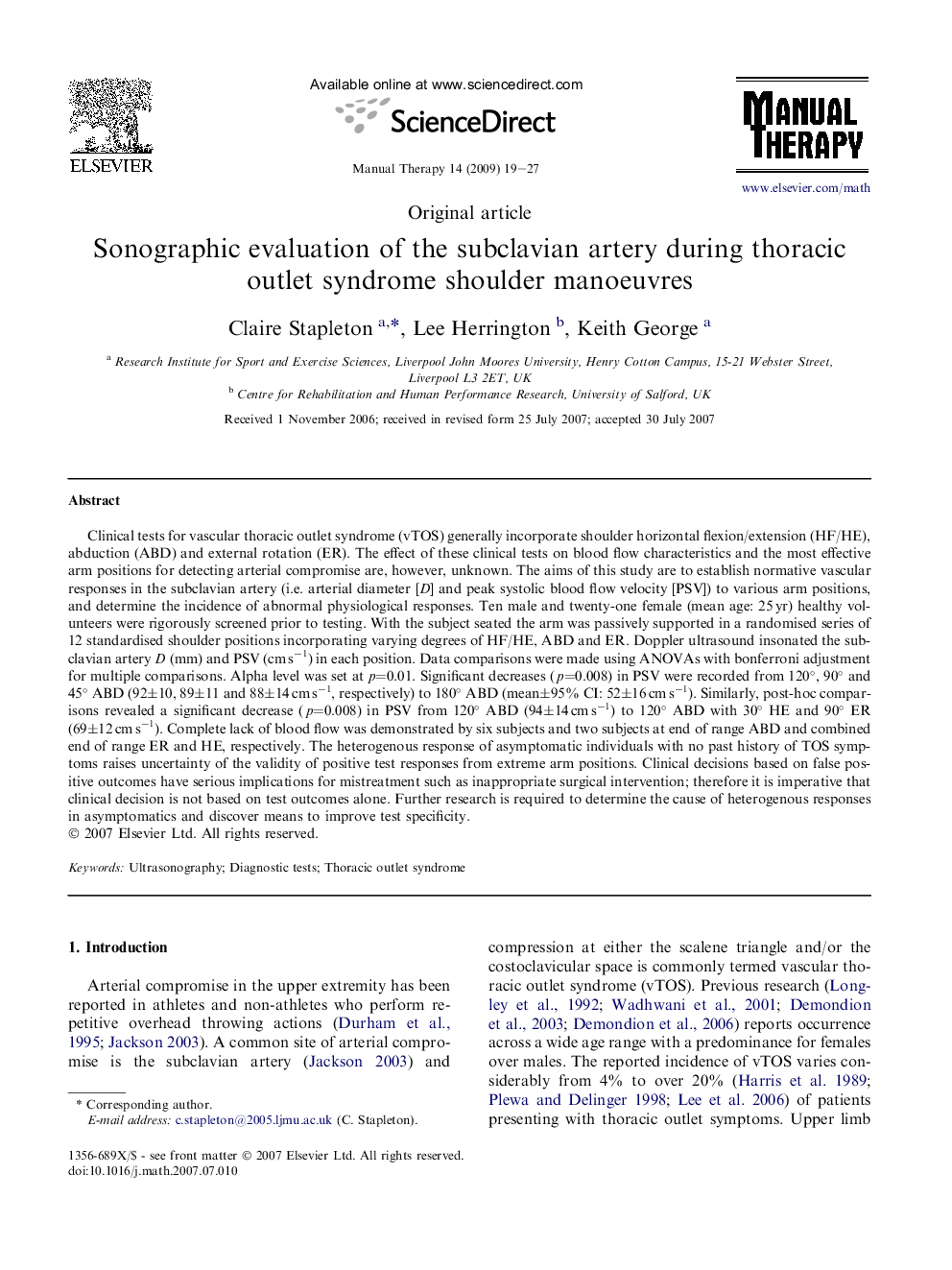| Article ID | Journal | Published Year | Pages | File Type |
|---|---|---|---|---|
| 2625601 | Manual Therapy | 2009 | 9 Pages |
Clinical tests for vascular thoracic outlet syndrome (vTOS) generally incorporate shoulder horizontal flexion/extension (HF/HE), abduction (ABD) and external rotation (ER). The effect of these clinical tests on blood flow characteristics and the most effective arm positions for detecting arterial compromise are, however, unknown. The aims of this study are to establish normative vascular responses in the subclavian artery (i.e. arterial diameter [D] and peak systolic blood flow velocity [PSV]) to various arm positions, and determine the incidence of abnormal physiological responses. Ten male and twenty-one female (mean age: 25 yr) healthy volunteers were rigorously screened prior to testing. With the subject seated the arm was passively supported in a randomised series of 12 standardised shoulder positions incorporating varying degrees of HF/HE, ABD and ER. Doppler ultrasound insonated the subclavian artery D (mm) and PSV (cm s−1) in each position. Data comparisons were made using ANOVAs with bonferroni adjustment for multiple comparisons. Alpha level was set at p=0.01. Significant decreases (p=0.008) in PSV were recorded from 120°, 90° and 45° ABD (92±10, 89±11 and 88±14 cm s−1, respectively) to 180° ABD (mean±95% CI: 52±16 cm s−1). Similarly, post-hoc comparisons revealed a significant decrease (p=0.008) in PSV from 120° ABD (94±14 cm s−1) to 120° ABD with 30° HE and 90° ER (69±12 cm s−1). Complete lack of blood flow was demonstrated by six subjects and two subjects at end of range ABD and combined end of range ER and HE, respectively. The heterogenous response of asymptomatic individuals with no past history of TOS symptoms raises uncertainty of the validity of positive test responses from extreme arm positions. Clinical decisions based on false positive outcomes have serious implications for mistreatment such as inappropriate surgical intervention; therefore it is imperative that clinical decision is not based on test outcomes alone. Further research is required to determine the cause of heterogenous responses in asymptomatics and discover means to improve test specificity.
